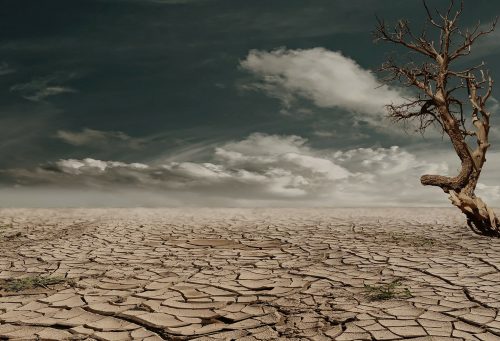Paul Nathanail, managing director of specialist environmental consultancy Land Quality Management Ltd discusses how this summer’s prolonged dry weather will have affected a particular type of clay soil.
During prolonged hot, dry weather, some British clays shrink and swell as they dry or wet; potentially damaging shallow foundations.
The summer of 1976 brings back memories for this blogger of kite flying on the yellowed grass of Blackheath – well before he knew about shrinking clays, subsidence… or even blogs!
 The past few months’ unusually prolonged hot and dry spells have revealed hidden structures, allowed long submerged artefacts to emerge to be seen and likely dried up the shallow clays beneath our feet.
The past few months’ unusually prolonged hot and dry spells have revealed hidden structures, allowed long submerged artefacts to emerge to be seen and likely dried up the shallow clays beneath our feet.
Clay is an interesting material. Think of a clay soil as a series of razor blades laid down underwater. Better still, think of the clay particles as flakes of phyllo pastry – perhaps you enjoyed some baklava during the summer? Some clays change volume depending on whether they are dry or wet. Such clay minerals have three think sheets stacked together. Water gets in between the ‘flakes’ and the structure swells when wet and shrinks when dry as the water is removed.
The aftermath of 1976 saw BOTH an increase in insurance claims from houses subsiding as their clay foundations shrank and then heaved once the autumn rains made the clays swell AND changes to the way house foundations were built. Guidance on the depth of foundations meant that the modern houses should be safe.
But it is good to remember not to tar all clays with the shrink/ swell brush. Clays like the kaolinite of Cornwall – perhaps you visited the Eden centre – and the illite of many glacial deposits don’t shrink and swell as they dry and wet. It is the smectite family – the montmorillonites and bentonite – that concern us.
The British Geological Survey website allows anyone to see what the geology is. However, specialist reports, such as the Envirocheck Soils Report provides site-specific insight on the potential for ground movement due to shrink/ swell clays.
And some good news – my friendly weather forecaster tells me we are in for some unseasonably high temperatures in mid-September so don’t pack away the shades and sun cream just yet.
This is a personal view and guest blog written for Argyll Environmental by Paul Nathanail, managing director of specialist environmental consultancy, Land Quality Management Ltd.













